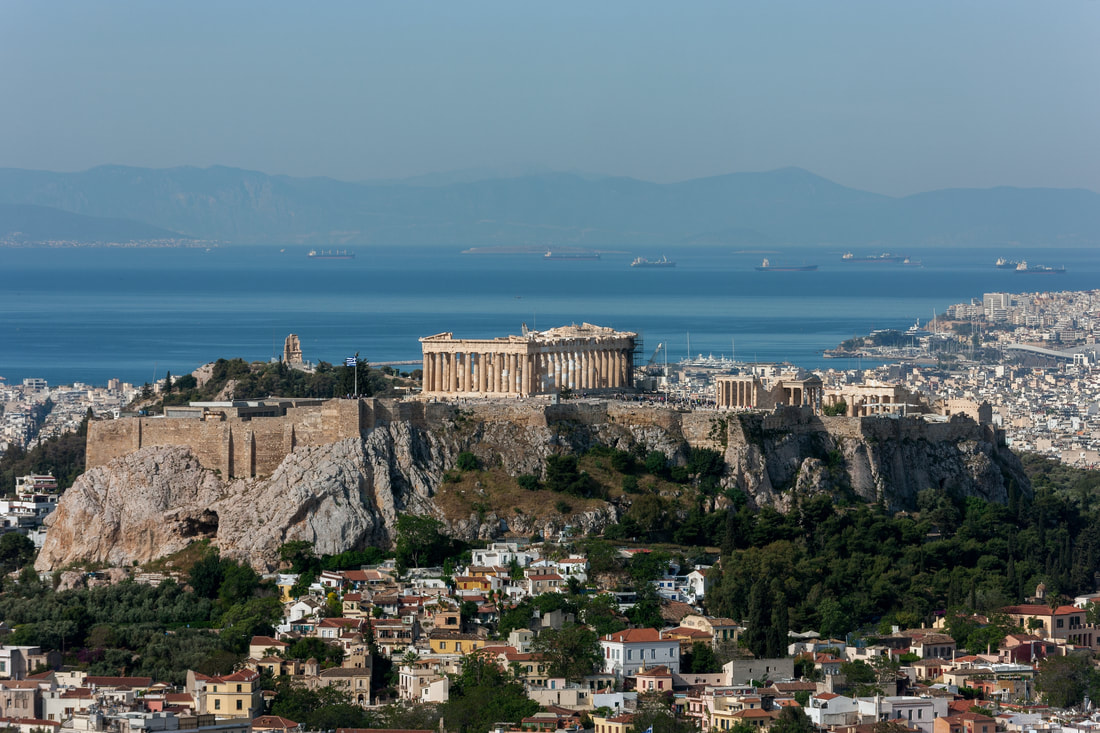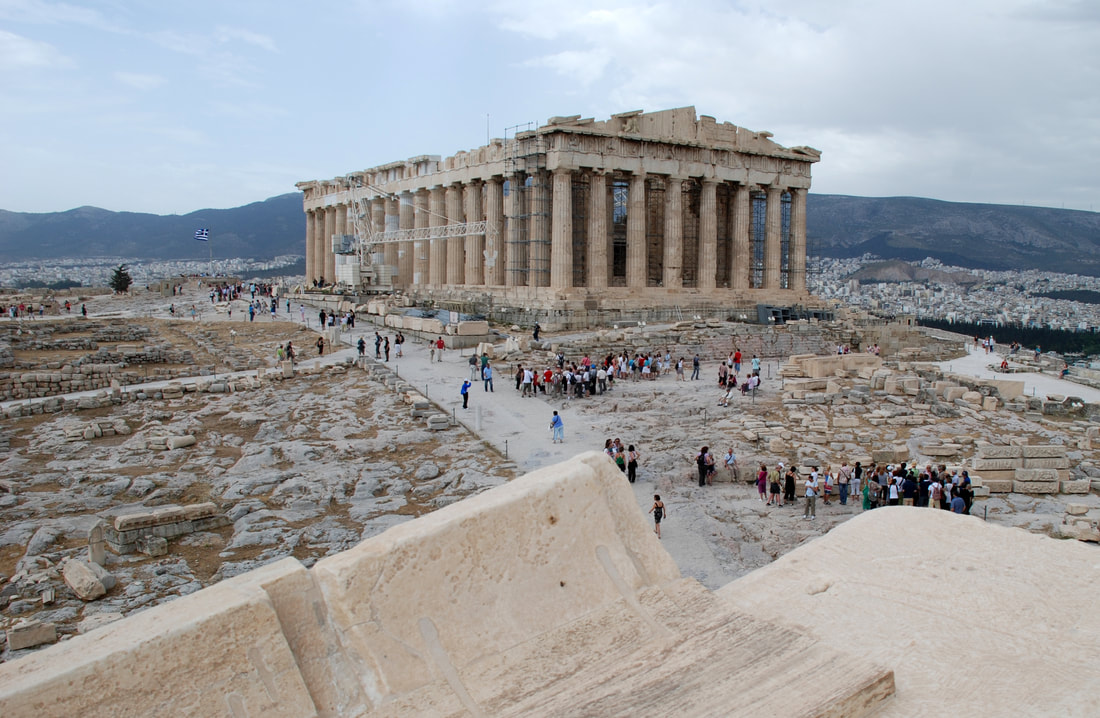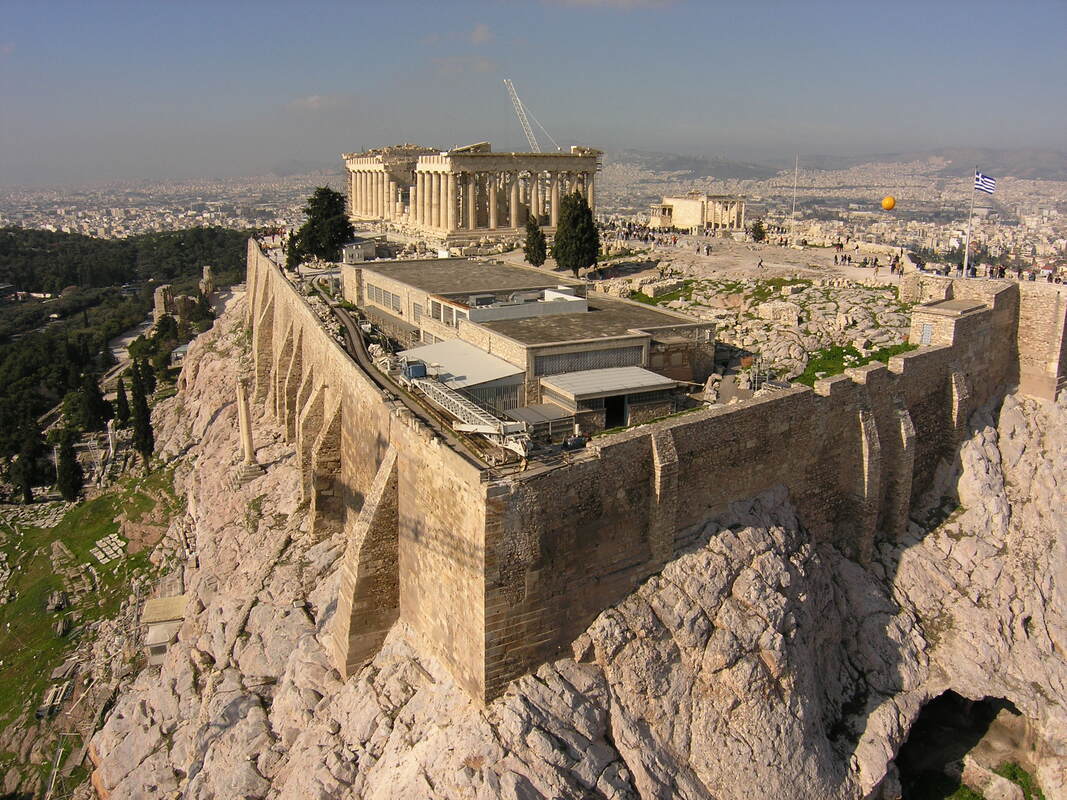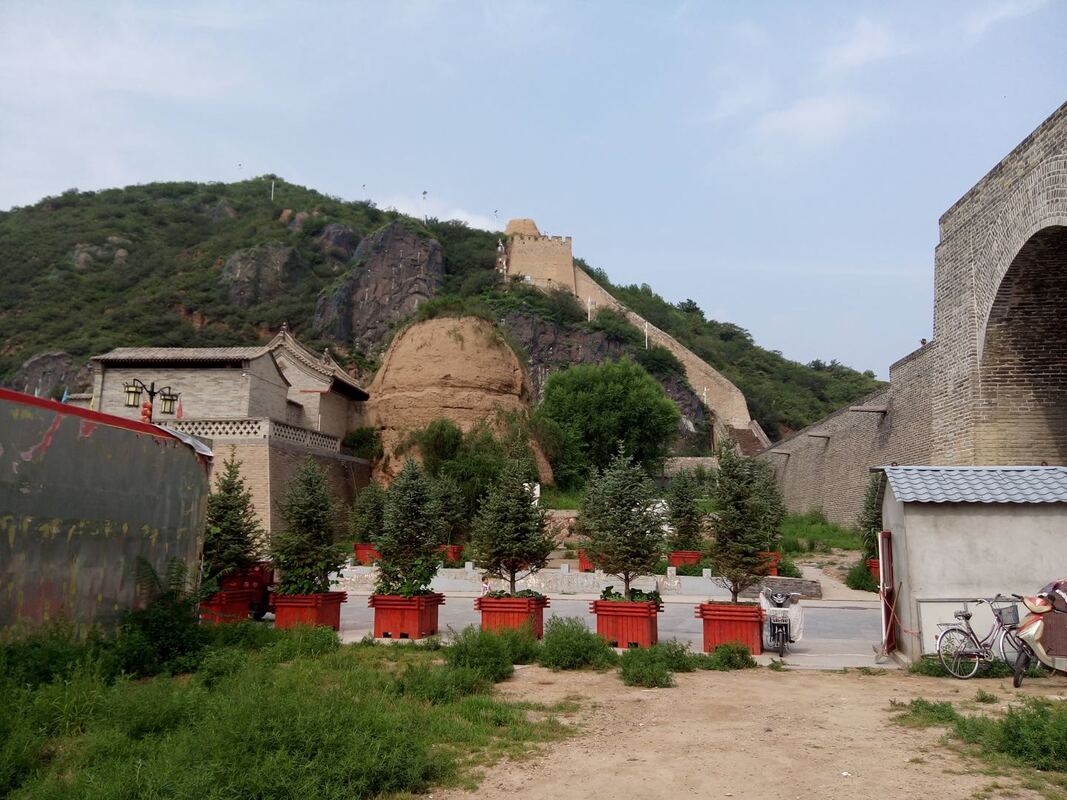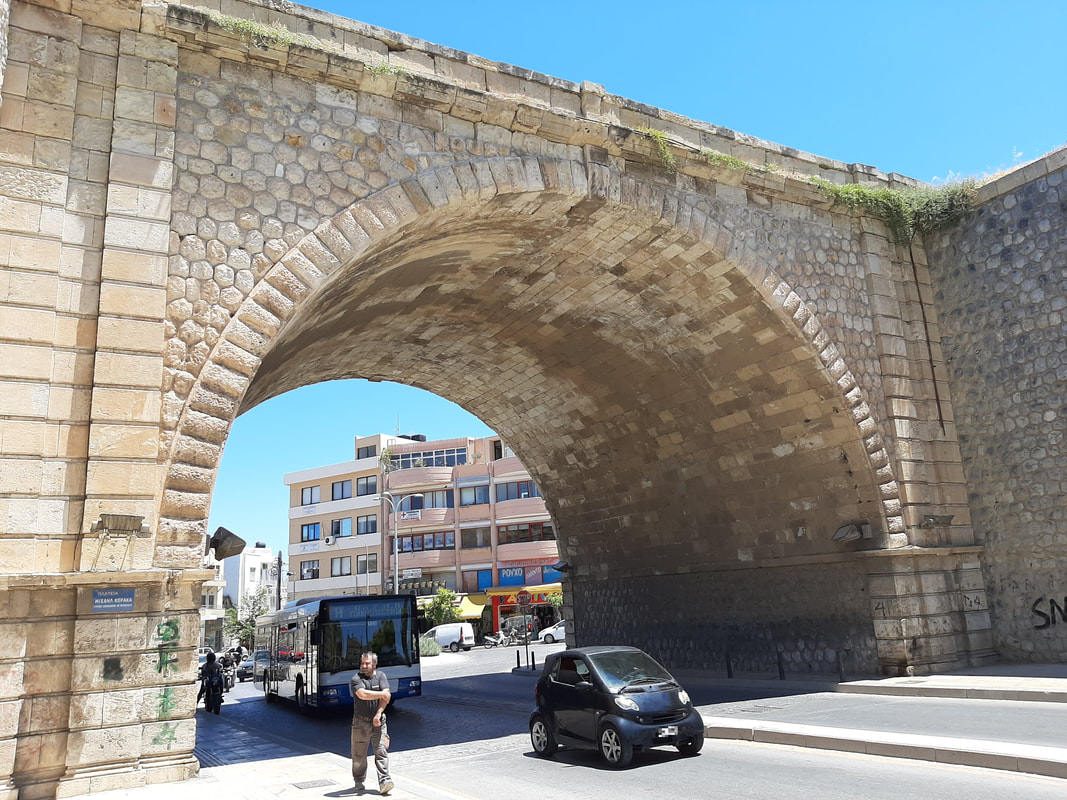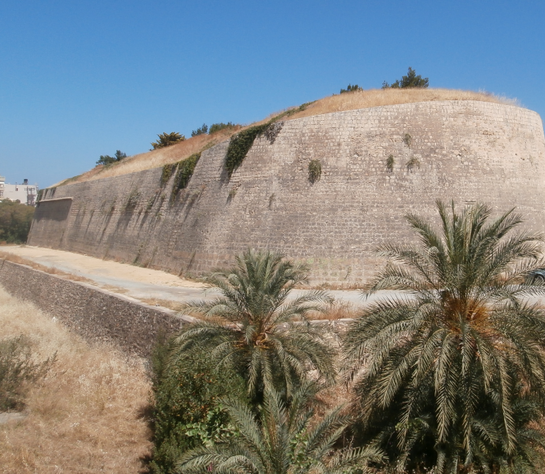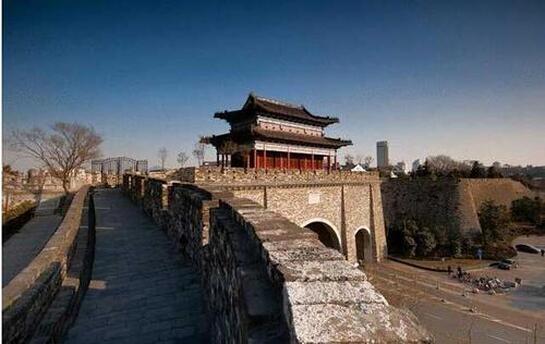The Acropolis (Athens, Greece)The Acropolis has been a landmark of the city of Athens for centuries, preserving a functional but above all aesthetic and emblematic role. In the 8th c. B.C the Acropolis hill became the home for the worship of Athena, the patron goddess of the city of Athens. Great temples were constructed during the 6th century B.C. but the major change took place in the 5th century B.C. when the city reached the zenith of its political, economic and artistic glory; an ambitious building programme was carried out under the leadership of the famous statesman Pericles. The programme included the building of the Parthenon (Peripteral temple of Doric style with ionic features, built by the Architects Iktinos and Kallikrates and the Sculptor Pheidias), the Erechtheion (An ionic prostyle temple with an unusual plan and rich sculptural decoration with the emblematic feature of the Porch of Caryatids), the temple of Athena Nike (Small and elegant temple of Ionic style, built by the Architect Kallikrates), the Propylaia ( the monumental entrance famous for its impressive coffered ceilings, built by the Architect Mnesikles) and other religious buildings.
The Circuit Wall, survives almost in its entirely but with numerous repairs from late antiquity to the present. The most ancient part, a Mycenean Cyclopean wall, dates from the 13th centrury B.C. In the 5th century, after the victories of the Athenians over the Persians, the north wall and some years later the south wall ware built along the north, south and the east side of the Acropolis rock. On the southern slope of the hill places of worship combined with cultural functions, such as the theatre of Dionysus and the Pericles Odeon (Conservatory) were erected. The commercial functions of the city, the Agora/the market, the workshops, etc. were developed in the north. Fundamental political ideas and rights such as democracy, freedom of speech and expression, justice and isonomia (equality of political rights) were discussed and elaborated among the prominent monuments of the site, especially in administrative buildings found in the surroundings of the Acropolis. After the 5th century A.D. the Parthenon was converted to a church and during Ottoman domination (1458-1833) to a mosque. On 27 September 1687, during a siege of the city by the Venetians a bomb fell onto the Parthenon severely damaging it. European interest in Athens and the Acropolis had already begun; The Acropolis monuments have aroused a lot of admiration since they were built, but it was in the middle of the 18th century when the Enlightenment discovering ancient Greek culture promoted the Parthenon as the symbol of both European and western civilisation. Its aesthetic and artistic value inspired the movements of classicism (18th century) and later on of neoclassicism (19th century). The Acropolis’ monuments received the first restoration and conservation interventions immediately after the establishment of the Modern Greek state (1833). Although it is considered to be the most important restoration that had greatly affected today's image of the monuments, the incompatible materials used caused extensive fragmentations very soon. The monuments of the Acropolis have been inscribed in the UNESCO’s World Heritage Sites List since 1987 and the archaeological site receives about 2.000.000 visitors per year. |
The Great Wall in Zhangjiakou (China)The Ming Great Wall starts in the Hushan Mountain of Liaoning Province (China) near the Yalu River in the east and ends at Jiayuguan in Gansu Province (China) in the west, with a total length of approximately 6300 km. It spans 10 provinces (cities and autonomous regions) including Liaoning Province, Hebei Province, Beijing City, Tianjin City, Shanxi Province, Shaanxi Province, the Inner Mongolia Autonomous Region, the Ningxia Hui Autonomous Region, Gansu Province, and Qinghai Province from the east to the west. Zhangjiakou City is one of the most famous regions for the construction of the Great Wall of different dynasties emerged in Chinese history. The Great Wall and related architectural sites in this area were declared state-level cultural relics; therefore, this location is the "Museum" of the Great Wall of China. The Ming Great Wall in this location was constructed in the period from Yongle to Chenghua of the Ming Dynasty (1403-1487 A.D.). It is essential to conduct dynamic monitoring and sustainability evaluations of the Great Wall considering its role as a model of stone-brick construction, as well as the potential impact from infrastructure construction related to the 2022 Winter Olympic Games.
|
The City Walls of Heraklion (Crete island, Greece)The fortifications of Heraklion are a series of defensive walls and other fortifications which surround the city of Heraklion (formerly Candia) in Crete, Greece. The first city walls were built in the Middle Ages, but they were completely rebuilt by the Republic of Venice. The fortifications managed to withstand the second longest siege in history for 21 years, before the city fell to the Ottomans in 1669. The first fortifications in what is now Heraklion were built by the Byzantine Empire. The city was captured by Arabs in 824, and it became the capital of the Emirate of Crete. At this point, they built a wall of unbaked bricks around the city, and surrounded it by a ditch. The new capital became known as Rabdh al-Khandaq (Trench Castle). In the early 13th century, Candia (modern Heraklion) and the rest of Crete fell under the control of the Republic of Venice. Initially the Byzantine walls remained in use, and they underwent various modifications. Following the fall of Constantinople in 1453, the expanding Ottoman Empire became a major threat for the Venetians. Due to this threat and the discovery of gunpowder, they decided to build new fortifications around Candia. Construction began in 1462, and the walls took over a century to be built. The fifth Ottoman–Venetian War broke out when the Ottoman Navy arrived off Crete on 23 June 1645. By August, Canea fell to the Ottomans, while the Fortezza of Rethymno fell in 1646. However, the Venetian garrison in Candia managed to hold out for 21 years, and the Siege of Candia remains the second longest siege in history. The city surrendered in 1669, and the Venetians and most of the population were allowed to leave peacefully, sparing the city from being sacked. Heraklion's fortifications have made it one of the best fortified cities in the Mediterranean. The walls remain largely intact to this day, and they are considered to be among the best preserved Venetian fortifications in Europe.
|
The Ming Dynasty City Walls in Nanjing (China)As the capital city of Jiangsu province, Nanjing is nowadays the second largest city in the lower Yangtze River region of China. Due to its strategic location and surrounding fertile land, Nanjing served as the capital of ten Chinese political regimes for 1,800 years, including Eastern Wu (one of the three major states in the Three Kingdoms period (211-280 A D), the Eastern Jin and the Southern Dynasties (Liu Song, Southern Qi, Liang and Chen) in the period of 317-589 A D, the Southern Tang of the Ten Kingdoms (937-976 A D), the empire of Ming Dynasty (1368-1421 A D) and finally the Republic of China (1927-1937, 1945-1949). The splendid history of Nanjing left us various cultural heritages, e.g. Ming Dynasty City Walls. This ancient city wall, totally 48 km long, was constructed by the first emperor of the Ming Dynasty (Zhu Yuanzhang, Hongwu Emperor) since 1368. At present, the well preserved part of the wall remains is about 25.1 km, and is considered as the longest surviving city walls in China.
|
